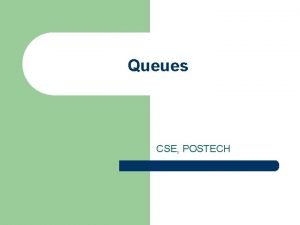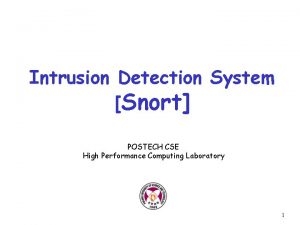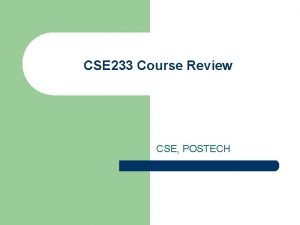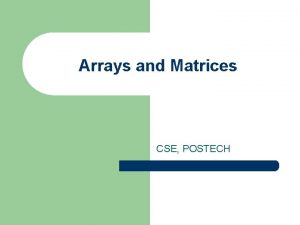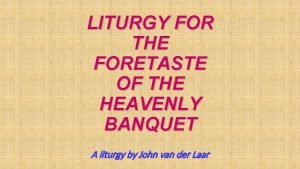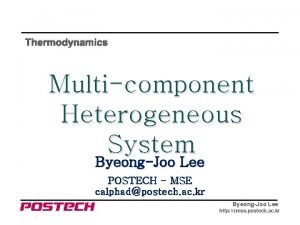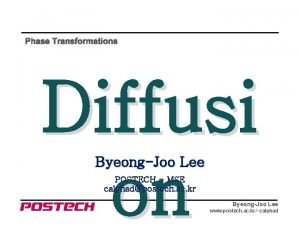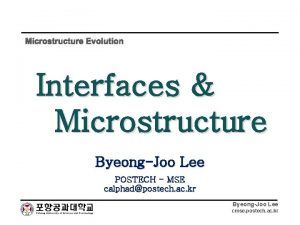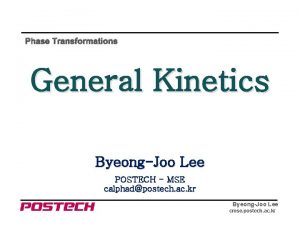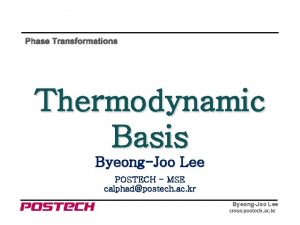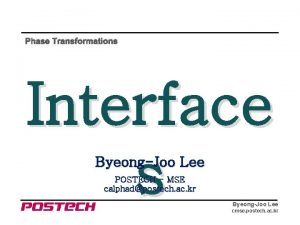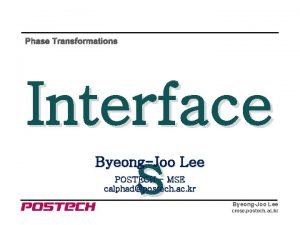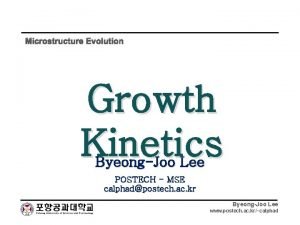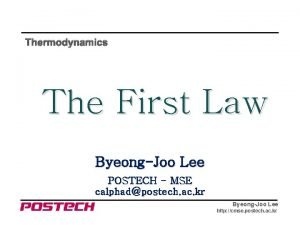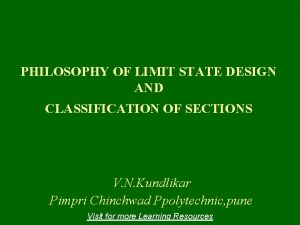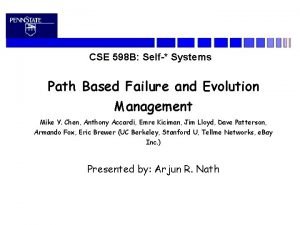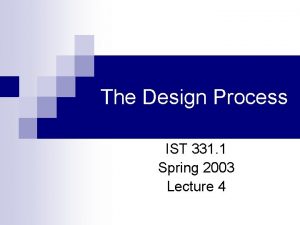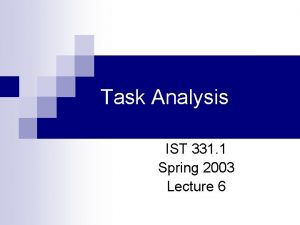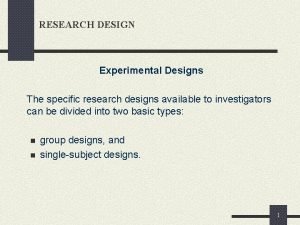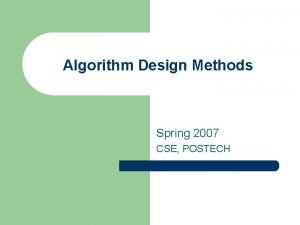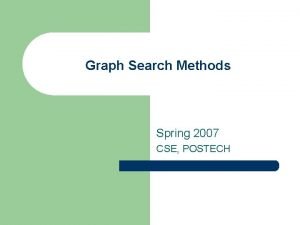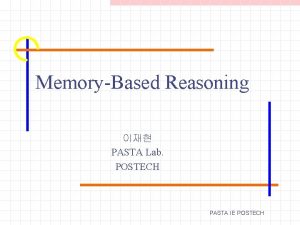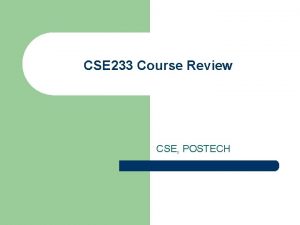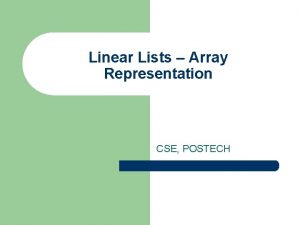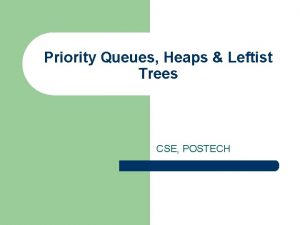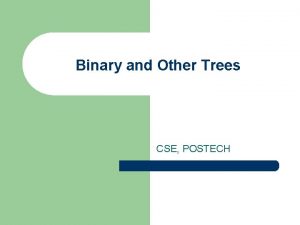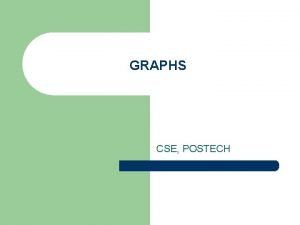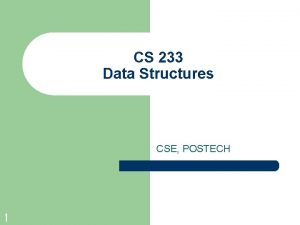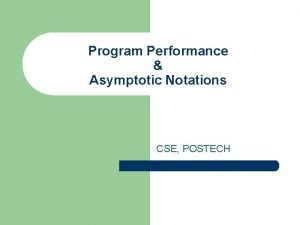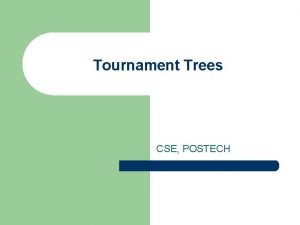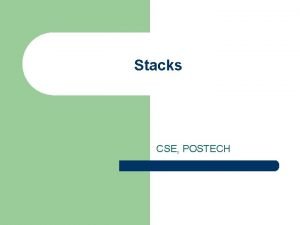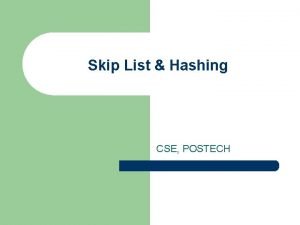Algorithm Design Methods Spring 2007 CSE POSTECH Algorithm
























- Slides: 24

Algorithm Design Methods Spring 2007 CSE, POSTECH

Algorithm Design Methods l l l Greedy method Divide and conquer Dynamic programming Backtracking Branch and bound

Some Methods Not Covered l l l Linear Programming Integer programming Simulated annealing Neural networks Genetic algorithms Tabu search

Optimization Problem l A problem in which some function (called the optimization/objective function) is to be optimized (usually minimized or maximized) l It is subject to some constraints.

Machine Scheduling l Find a schedule that minimizes the finish time. – – optimization function … finish time constraints l l Each job is scheduled continuously on a single machine for an amount of time equal to its processing requirement. No machine processes more than one job at a time.

Bin Packing l Pack items into bins using fewest number of bins. – – optimization function … number of bins constraints l l Each item is packed into a single bin. The capacity of no bin is exceeded.

Min Cost Spanning Tree l Find a spanning tree that has minimum cost. – – optimization function … sum of edge costs constraints l l Must select n-1 edges of the given n vertex graph. The selected edges must form a tree.

Feasible and Optimal Solutions l A feasible solution is a solution that satisfies the constraints. l An optimal solution is a feasible solution that optimizes the objective/optimization function.

Greedy Method l Solve problem by making a sequence of decisions. l Decisions are made one by one in some order. l Each decision is made using a greedy criterion. l A decision, once made, is (usually) not changed later.

Machine Scheduling LPT Scheduling. l Schedule jobs one by one in decreasing order of processing time. l Each job is scheduled on the machine on which it finishes earliest. l Scheduling decisions are made serially using a greedy criterion (minimize finish time of this job). l LPT scheduling is an application of the greedy method.

LPT Schedule l LPT rule does not guarantee minimum finish time schedules. (LPT Finish Time)/(Minimum Finish Time) <= 4/3 – 1/(3 m) where m is number of machines. l l l Minimum finish time scheduling is NP-hard. In this case, the greedy method does not work. Greedy method does, however, give us a good heuristic for machine scheduling.

Container Loading l l l Ship has capacity c. m containers are available for loading. Weight of container i is wi. Each weight is a positive number. Sum of container weight > c. Load as many containers as possible without sinking the ship.

Greedy Solution l l l Load containers in increasing order of weight until we get to a container that does not fit. Does this greedy algorithm always load the maximum number of containers. Yes. May be proved using a proof by induction. (see Theorem 13. 1, p. 624 of text. )

Container Loading With 2 Ships l Can all containers be loaded into 2 ships whose capacity is c (each)? – – – Same as bin packing with 2 bins (Are 2 bins sufficient for all items? ) Same as machine scheduling with 2 machines (Can all jobs be completed by 2 machines in c time units? ) NP-hard

0/1 Knapsack Problem l l l Hiker wishes to take n items on a trip. The weight of item i is wi. The knapsack has a weight capacity c. When sum of items weights <= c, all n items can be carried in the knapsack. When sum of item weights > c, some items must be left behind. Which items should be taken out?

0/1 Knapsack Problem l l l Hiker assigns a profit/value pi to item i. All weights and profits are positive numbers. Hiker wants to select a subset of the n items to take. – – The weight of the subset should not exceed the capacity of the knapsack. (constraint) Cannot select a fraction of an item. (constraint) The profit/value of the subset is the sum of the profits of the selected items. (optimization function) The profit/value of the selected subset should be maximum. (optimization criterion)

0/1 Knapsack Problem l Let xi=1 when item i is selected and let xi=0 when item i is not selected. maximize Sigma(i=1…n) pixi subject to Sigma(i=1…n) wixi <= c

Greedy Attempt 1 l l l Be greedy on capacity utilization (select items in increasing order of weight). n = 2, c = 7 w = [3, 6] p = [2, 10] Only 1 item is selected. Profit/value of selection is 2. It is not best selection.

Greedy Attempt 2 l l l Be greedy on profit earned (select items in decreasing order of profit). n = 3, c = 7 w = [7, 3, 2] p = [10, 8, 6] Only 1 item is selected. Profit/value of selection is 10. It is not best selection.

Greedy Attempt 3 l l l Be greedy on profit density (p/w) (select items in decreasing order of profit density). n = 2, c = 7 w = [1, 7] p = [10, 20] Only 1 item is selected. Profit/value of selection is 10. It is not best selection.

Greedy Attempt 3 l Be greedy on profit density (p/w). – – l l works when selecting a fraction of an item is permitted. Select items in decreasing order of profit density; if next item doesn’t fit, take a fraction to fill knapsack. n = 2, c = 7 w = [1, 7] p = [10, 20] Item 1 and 6/7 of item 2 are selected.

0/1 Knapsack Greedy Heuristics Greedy Attempt 4 l l Select a subset with <= k items. If the weight of this subset is > c, discard the subset. If the subset weight is <= c, fill as much of the remaining capacity as possible by being greedy on profit density. Try all subsets with <= k items and select the one that yields maximum profit.

0/1 Knapsack Greedy Heuristics l l l First sort into decreasing order of profit density. There are O(nk) subsets with at most k items. (C(n, 1) + C(n, 2) + C(n, 3) + … + C(n, k)) Try a subset takes O(n) time. Total time is O(nk+1) where k > 0. (best value – greedy value) / best value <= 1/(k+1)

0/1 Knapsack Greedy Heuristics
 Postech cse
Postech cse Postech cse
Postech cse Postech cse
Postech cse Postech cse
Postech cse Foretaste of spring 2007
Foretaste of spring 2007 Giduk
Giduk Winter spring summer or fall
Winter spring summer or fall Postech mse
Postech mse Xiter10
Xiter10 Postech mse
Postech mse Mse postech
Mse postech Postech mse
Postech mse Postech mse
Postech mse Postech mse
Postech mse Postech mse
Postech mse Thermodynamics
Thermodynamics Hyeonseob
Hyeonseob Wax pattern in fpd
Wax pattern in fpd Design of gantry girder as per is 800 2007
Design of gantry girder as per is 800 2007 Cse 598 advanced software analysis and design
Cse 598 advanced software analysis and design Ist spring design and validation
Ist spring design and validation Analysisist
Analysisist What is fact analysis
What is fact analysis Research design example
Research design example Universal design methods
Universal design methods
